Future Flexibility: Designing for Stewardship and Circularity


The New Well-Being Trend: Adding Value to Commercial Spaces with Water Features
Unlocking the Future of Clean Energy

Future Flexibility: Designing for Stewardship and Circularity


The New Well-Being Trend: Adding Value to Commercial Spaces with Water Features
Unlocking the Future of Clean Energy
Zetlin & De Chiara LLP, one of the country’s leading law frms, has built a reputation on counseling clients through complex issues. Whether negotiating a contract, resolving a dispute, or providing guidance to navigate the construction process, Zetlin & De Chiara is recognized as a “go-to frm for construction.”


We’ve done hard things before, we do them all the time.
For most cancer patients, the usual options are surgery, chemotherapy, or radiation. So we’re working on ways to get the immune system to deploy billions of cancer-killing cells and help more patients survive.

When some people experienced mysterious COVID symptoms and had nowhere to go, our team created the first Center for Post-COVID Care.
It wasn’t that long ago we had to open up your whole chest for heart surgery. Now we’re pioneering a bypass that goes through a few tiny incisions. With this surgery, we can get you back on your feet in weeks instead of months.
So if anyone ever tells you there’s no other way—don’t listen.
it couldn’t be done. We didn’t listen.
From coworking memberships to turnkey o ces, WeWork gives you more flexibility with your workspace. Discover solutions that make hybrid work for you.

































































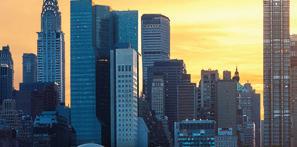
































editorial Editor
Associate Editors
Copy Editor
Director of Communications and Marketing
Director of Newsletter
Division
Cheri Phillips
Director of Special Events
President & CEO
art
Art Director Graphic Designer
Priyanshi Pareek
Cover Photography
contributors
John Britto
business
Technology Consultant
Joshua Fried
Distribution

digital media
Editors
Cheri Phillips
Web Developer
Kris Kiser
James Palace
East Coast Office West Coast Ofice
mannpublications.com

One of the things you learn when you’ve been a publisher as long as I have is that you can’t predict what happens after a story. Our May 2019 cover story featured Pamela Swidler, then global head of real estate for WeCo. (the umbrella name for WeWork), which seemed to rapidly be taking over the world with multiple formats. Just months later, the company was in turmoil, with a near collapse so spectacular that documentaries and feature films were made. Through it all, though, Pam remained a rock at WeWork, and now has been justly rewarded with a recent promotion. Her story of how she and WeWork came through trials including a failed IPO, leadership changes and a pandemic is fascinating reading and proof that sometimes
the good guys do win.

Elsewhere, find the recap of the National Realty Club’s first event of 2023, held at the trendy Sei Less. It’s an ongoing pleasure to see this 76-year-old organization return to life, thanks to our dedicated volunteers. Stay tuned for more educational and networking lunches, breakfasts and more to come!

Spring is finally here, and we have a lot more planned in the months ahead. I look forward to sharing it all with you.

I love the man that can smile in trouble, that can gather strength from distress, and grow brave by reflection”
–Thomas Paine





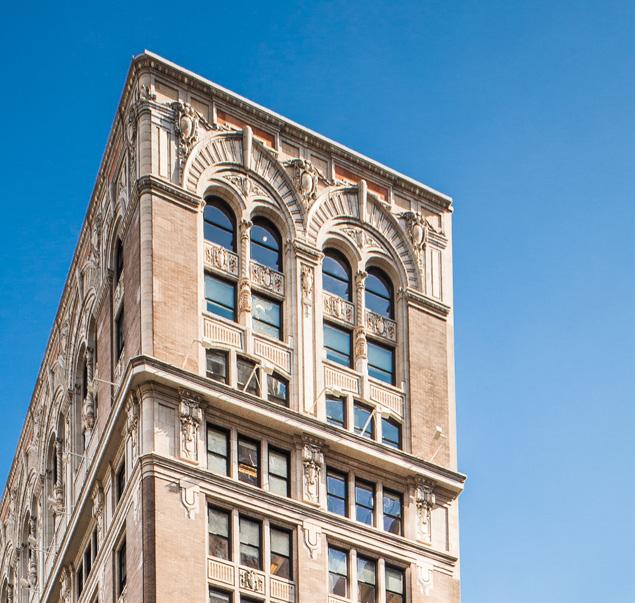











Welcome to our annual Sustainability Issue, always scheduled for April in honor of Earth Day.
wind turbines and more. As you’ll see, this month, our contributors really
Heather Smith of American Sealants tells us about the value of water in other topics.
which shows how a crisis can help a team not just survive but thrive.
VISIT US AT mannpublications.com
FOLLOW US ON INSTAGRAM @mannpublications









The National Realty Club (NRC) held its first networking and educational event of 2023 with a luncheon at Midtown's trendiest restaurant, bar and speakeasy Sei Less. The day's guest speaker Daniel Vitulli, group national partner in charge of the real estate group at Marcum LLP, discussed current trends and future opportunities in sectors including retail, o ce, residential, hospitality and industrial.

The event is the first of many planned for the newly reinvigorated NRC, which was founded in 1947 by real estate legends including Harry Helmsley, Irving Schneider, Alvin Schwartz, Aaron Gural, David Rose, Irving Mann, Lawrence Wien and Jack D. Weiler. Today, under the direction of Je rey Mann (Irving Mann’s son), the NRC is again providing opportunities for real estate professionals to gather to exchange information about trends, network and make deals.

01. Yves Blain, Jennifer Catanese, Amanda Cady, Josh Becker, Steven Fischer, Daniel Vitulli and Mary Anne Alino, Marcum LLPl
02. Eric Reiss and Scott Galin, Handro Properties

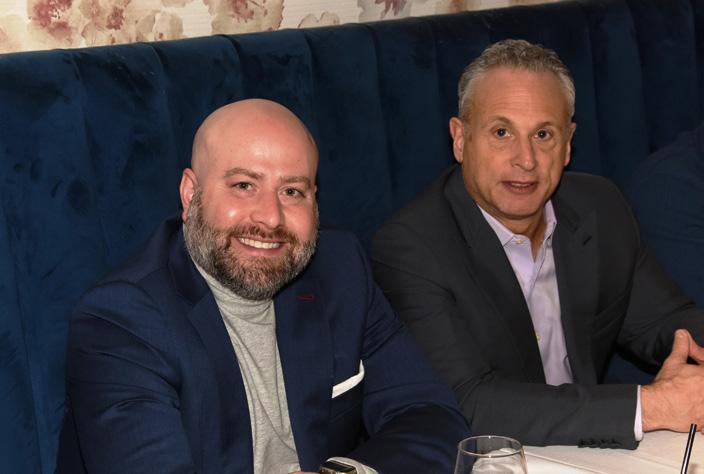
03. Adam Stryker, Friedman Management Corp.; Joseph Corrado, Champion Elevator; Valerie Feder, GuardHill Financial Corp. and Don Gelestino, Champion Elevator Corp.

04. Dan McLaughlin Sr., Benfield Electrical Supply and Robert Romanoff, Absolute Electric

05. Dan Berman and Jay Nevelo , Kramer Levin
06. Julie Levin, Zetlin & De Chiara; Je Mann, Mann Publications and Jaimee Nardiello, Zetlin & De Chiara
07. Ed Wilkin, Wilkin Guttenplan and Ariel Garcia, Urban Pathways
08. Michael Mintz, MD Squared Property Management Company and Marc Kaplan, AKAM
09. Jeff Mann, Mann Publications; Penny Herrera, NRC and Ivi Shano, Sei Less NYC

10. Jonathan Stern, Meridian Capital Group and Lee E. Legaspi, Jamarr B. Lewis, Jennifer Ricca-Chiapperino, Adam Sherman and Joan Baltazar, U.S. Bank

11. Jonathan Stern, Meridian Capital Group and Janet DelPozzo, Champion Elevator Corp.

12. Dan Vitulli, Marcum LLP


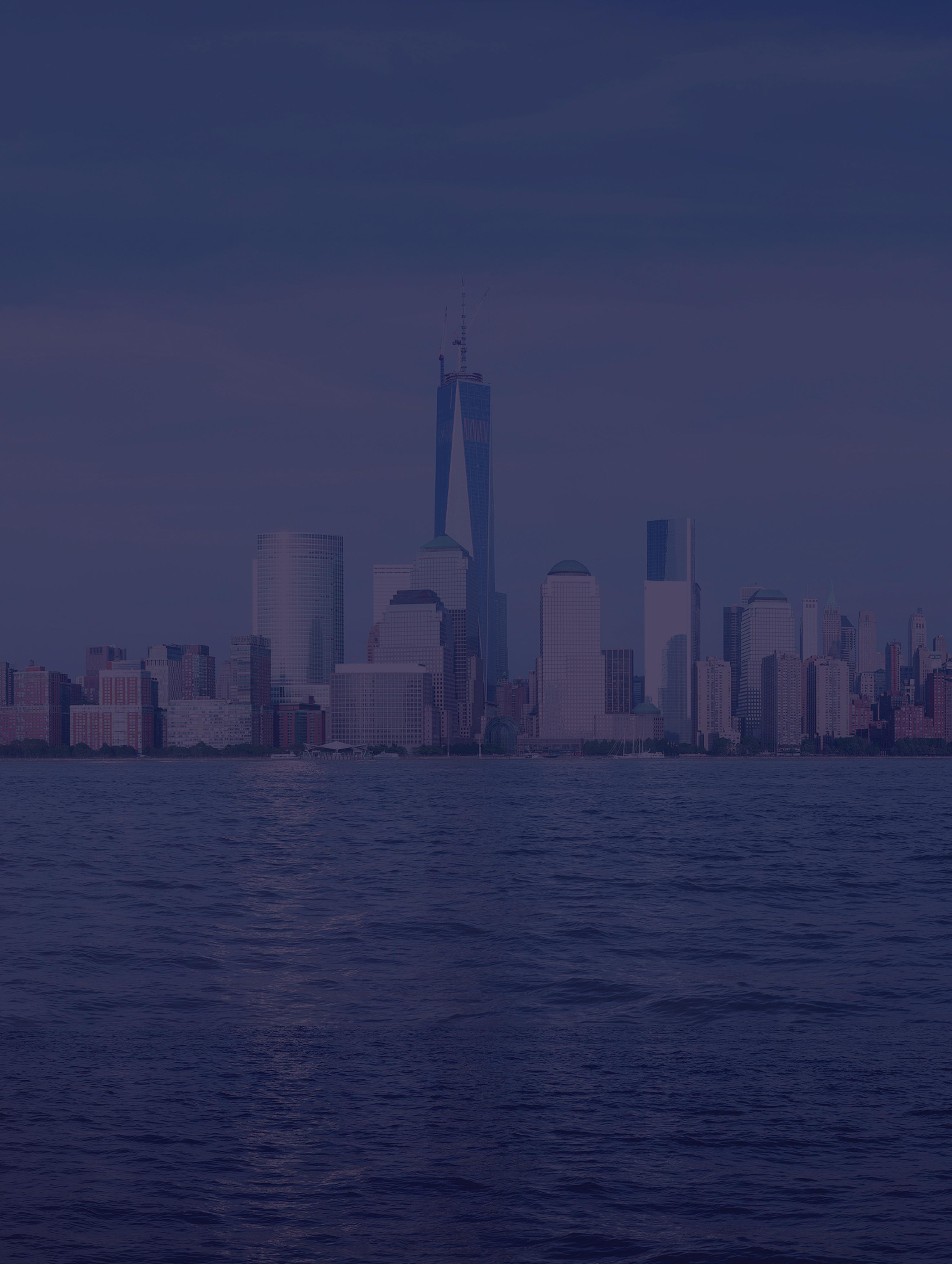




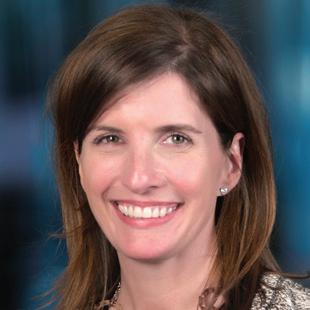


ATCO PROPERTIES & MANAGEMENT RENEWS 17,500SF IN MIDTOWN
properties.
ONE OF MANHATTAN’S OLDEST SMALL HOTELS OFFERED FOR SALE


INNOVO GROUP TOPS OUT THE BORDEN COMPLEX





777 PARTNERS TAKES PENTHOUSE OFFICES AT ONE MADISON AVENUE

LITTLE CAESARS SIGNS 10 - STORE RESTAURANT DEAL TO EXPAND IN NYC

PRIMARK TO COME TO QUEENS CENTER


LARGEST 3D PRINTED HOUSE HITS THE MARKET

CASA DE CAMPO PARTNERS WITH THIRDHOME

COLDWELL BANKER LAUNCHES IN CHILE

Chilean real estate market.
the most iconic and most respected
Absolute Electrical Contracting of NY services commercial, industrial, residential and retail clients.
Our construction division has the ability to do any task that is required of an electrical contractor.
 Robert Romanoff, President
Robert Romanoff, President
NEW YORK RESIDENTIAL CLOSED MEDIAN SALE PRICE DROPS 4.4% IN FEBRUARY


SOTHEBY'S INTERNATIONAL REALTY EXPANDS IN NEW YORK
ZILLOW: HIGH INTEREST RATES KEEPING INVENTORY LOW
THE FASTEST GROWING REAL ESTATE ORGANIZATION AND FOUNDATION IN THE CITY

$995/YEAR MEMBERSHIP

BOMA ENDORSES SMALL BUSINESS ENERGY LOAN ENHANCEMENT ACT

the loan amounts to small busi
CALLAHEAD DEBUTS GILDED AGE PORTABLE RESTROOMS

Callahead has introduced The dential clientele.
KIND LENDING LLC LAUNCHES RESULTS HOME MORTGAGE LLC


QUEENS’ FIRST AI - DRIVEN AUTOMATED PARKING GARAGE OPENS AT THE ROWAN

RockFarmer Properties is pleased
ROC360 ACQUIRES FINANCE OF AMERICA COMMERCIAL THROUGH ASSET SALE

CERTIFIED POWER SOLUTIONS LAUNCHES SNOWPAK
Located at the recently completed and spreader applications in one













ADDRESSABLE LAUNCHES SMARTCOPY, GPT3- POWERED MARKETING TOOL


EVO AIMS TO REVOLUTIONIZE REPAIRS AND MAINTENANCE OF RENTED HOUSING
TURBOTENANT RELEASES TAX COURSE FOR LANDLORDS

deductible business expenses.




VERGESENSE DEBUTS OCCUPANCY INTELLIGENCE PLATFORM

enterprises truly understand their inconsistent and unpredictable.
YARDI ESG DRIVES PROPERTY ANALYTICS

ZILLOW ADDS INTERACTIVE PROPERTY MAPS FOR RENTERS

Counsel to Related Companies and Oxford Properties Group in connection with the development of and all leasing activities at the 26-acre Hudson Yards on the West Side, the largest private development in Manhattan since Rockefeller Center.
Counsel to Google in connection with its US$2.4 billion acquisition of Chelsea Market in New York City.
Counsel to BlackRock in its 850,000square-foot lease for its planned headquarters relocation to 50 Hudson Yards.
Counsel to Brookfield Property Partners on all aspects of the development of Manhattan West in the Hudson Yards District, including its recent lease to the National Hockey League.
Counsel to Vornado Realty Trust and Related Companies on the redevelopment of Penn Station, including the redevelopment of the James A. Farley building and construction of Moynihan Train Hall.
Counsel to J.P. Morgan, as lead lender, in its US$900 million construction loan syndication to Extell Development for the development of Central Park Tower.
Counsel to SL Green Realty Corp., including all zoning approvals, in connection with the development and leasing of One Vanderbilt Avenue, an iconic 1,401-foot tall, 1.7 million square foot office tower being constructed on the full block to the west of Grand Central Terminal.

Counsel to Maefield Development in its approximately US$1.5 billion acquisition of the EDITION hotel, retail, and signage project known as 20 Times Square.
Counsel to JP Morgan Chase in connection with various aspects of its planned 2.5-million-square-foot headquarters redevelopment at its 270 Park Avenue location.
“An extremely talented real estate group with an impressively deep bench: the team is ideal for handling the most complex matters.”
— Chambers USA
CURBIO APPOINTS LEVINE TO CHIEF FINANCIAL OFFICER

FLUSHING INDUSTRIAL PORTFOLIO SELLS FOR $51M


The Top Hat Award is a prestigious honor presented annually to an individual for lifetime achievement and dedication in the Credit Industry.


We are proud to recognize Melanie L. Cyganowski and Michael Stanley, who have reached new levels of achievement within our community. This year, we will celebrate their accomplishments with an award ceremony at New York Hilton & Towers.
1335 AVENUE OF THE AMERICAS J n Us to H

HOME BUILDER LAUNCHES FRANCHISE OPPORTUNITY

Residential construction company businesses to more communities across the country.
CRYPTO MARKETPLACE FOR TEXAS REAL ESTATE TO LAUNCH APRIL 3

dential and commercial real estate
FORDHAM RE INSTITUTE NAMES WHELAN TO EXECUTIVE ADVISORY COUNCIL

get down to banking, so you can get down to business.
We may be one of the 10 largest banks in the U.S., but we never lose sight of the individual. Our Relationship Managers personally get to know your business, taking the time to understand your unique needs before o ering their custom solutions. And with over 150 years of industry experience, you won’t just like working with us. You’ll love it.
tdbank.com/commercialbanking









When Mann Report spoke with Pamela Swidler, then global head of real estate transactions and special counsel of WeWork, in May 2019, the company was in major growth mode, with multiple brands that also included housing (WeLive), wellness (Rise by We) and even education (WeGrow). It also was continuing global expansion plans for its core o ce concept.
A lot can happen in four years and did for WeWork: a failed initial public o ering, the ouster of its co-founder, the closure of its ancillary brands and multiple locations, a new executive team and a pandemic that kept o ce workers at home. Yet Swidler has remained at WeWork, helping to steer it through the turmoil and seeing her own career grow. Recently promoted to chief legal o cer, chief compliance o cer and corporate secretary, her purview has expanded beyond overseeing real estate to financial matters as well.

“For 15 years, I focused mainly on real estate,” she said. “I’ve acted as
a generalist in some matters. Often, you just have to dig and research to best advise your internal clients and partners. For me, I’m excited to add a new set of skills on top of my real estate knowledge that I’m just starting to dive into.”
Case in point: Swidler spoke just days after WeWork announced a recapitalization that at closing will result in approximately $540 million in new funding, $175 million in new capital commitments and $300 million in rolled capital commitments, totaling over $1.0 billion, resulting in the cancellation of approximately $1.5 billion in debt and net incremental liquidity.
The move saved the company from a much-rumored bankruptcy filing and puts it on a path to profitability as occupancy levels have rebounded.
In fiscal year 2022, the company grew revenue by 26% year-overyear, increased physical memberships by 17% year-over-year, and grew physical occupancy to 75%, a 12% increase
year-over-year, .
“This was a transaction that had a lot of moving parts,” Swidler said. “My role was to work with our outside counsel [Kirkland & Ellis] and our own internal stakeholders to make sure everyone is on the same page as well as doing what I can to resolve any issues.”
The transaction is
something Swidler would not have been involved with prior to her most recent promotion, she said, as she focused on the company’s real estate portfolio. But her career has grown steadily in her seven years at WeWork.
After beginning her career as an associate at Kramer Levin Naftalis & Frankel, where she focused on complex
commercial real estate transactions, she joined WeWork in 2016 as senior counsel for real estate. She eventually became deputy general counsel and then regional general counsel, Americas, later heading all real estate transactions for the rapidly expanding company.
“We have over 600 consolidated properties under the WeWork name

and more that are franchised. That is a large and active portfolio for our teams to manage,” she said. “Prior to 2019, I was overseeing a very large team to manage the rapid expansion when we were in growth mode. We were expanding our footprint globally and there was a lot of legal work, oversight and negotiation across the world.”
Then it all came crashing down. WeWork filed paperwork for an initial public o ering in August 2019, and the subsequent analysis of its unprofitable financials and reckless actions of co-founder and CEO Adam Neumann (including smoking marijuana on a private jet on an international trip) saw the valuation drop from $47 billion to below $5 billion. By November of that year, the company’s largest investor, SoftBank, had taken control, Neumann had exited and 2,400 employees were laid o “It was very hard on a personal and professional level, seeing the company change so rapidly,” she recalled. “For me, what helped me through that time was a strong belief in the company, the product and in the
amazing team that I work with. The people here at WeWork are incredible and they also care about each other, the product and the brand. Everyone came together to prop each other up when it was critical to do so.”
In February 2020, Sandeep Mathrani, former CEO of Brookfield Properties’ Retail Group and vice chairman, and previously CEO of shopping center developer GGP Inc. (which he led out of Chapter 11 and was acquired by Brookfield in 2018) was named WeWork CEO and chairman.
“Having someone come in with that restructuring background and both o ce and retail background from his time at GGP and Vornado Realty Trust, he was the right person at the right time,” she said. “We’ve been extremely fortunate to have him leading the charge over the last three years.”
All seemed to be stabilizing. Other We concepts were divested and Swidler and her team were and remain focused on right-sizing the o ce portfolio, closing
some 200 locations and renegotiating rents on some others, reinventing the leases they’d created years before. It was an educational experience.

“I spent my first three years here signing deals, and there’s a ton of work in that,” she said.
“There’s a lot of drafting,
negotiating, working in the details and internal management to make sure everyone is on the same page.”
Leases are 10- to 30-year documents and must be complex to accommodate any number of contingencies in finance and operations to allow
the product to grow and change.
“I learned a lot and everyone on my team learned a ton all very quickly by working on a wide variety of leasing and management deals during the growth process, from a legal, real estate business, real
estate and internal operation perspective,” she continued.
When the business changed, so did their mindset as they focused on undoing some of their earlier work. It’s an ongoing process.
“This has been an education on how to improve our negotiation of our deal documents going forward to plan for downside cases,” she said. “We’ve seen what works and what doesn’t work as well in a downsizing scenario. From a legal perspective, I know we will be even stronger negotiators going forward. I like to tell my team that just in their limited time here, they have experienced multiple real estate cycles.”
Then came COVID-19. Occupancy dropped as lockdowns began. But WeWork’s locations remained open, as they provided essential services, Swidler explained.

“This was foreign territory for everyone in real estate. People had to look at their own situation to figure out how to manage. No one knew exactly what to do,” she said.
“After the initial two weeks of the lockdown were extended
indefinitely, there were a lot of questions, a lot of discussions internally and complex management as each city had a di erent set of lockdown rules.”
WeWork determined early on that it would adopt a universal approach to its locations — they were essential businesses, supporting first responders, medical workers and other services.
“We have members who are essential services providers or who support them,” she said. “It was important
or medium business or a solo entrepreneur that needs space,” she said. “You might have a situation where people come in every day or a few days a week. We have o erings through WeWork Workplace that allow you to optimize your workspace and have employees check in at desks. Or a member company may just want a place where colleagues can gather when they’re in town or for a couple of days a week. Everyone wants or needs that flex space solution for di erent purposes that are unique to their situation, and WeWork has o erings and products that answer to the wide variety of those needs.”
and associates to work more conveniently.
And despite the slow return of full-time office workers to many downtowns, WeWork is maintaining its commitment to central business districts. In March, it reopened its eight-level location at Moor Place in London after a major refurbishment.


“We’re still seeing the bulk of the demand in central business districts,” she said. “Even if it’s a flexible solution for people who are coming into the o ce a couple of times a week, or they want access for a team gathering, they want that CBD location.”
to stay ahead of what members want as part of their optimization e orts,” she said. “What they want out of their o ce space is going to be di erent from before COVID-19.”
After all, adapting to changing needs is what WeWork is about.
to provide a space for those services. We had to operate and provide them with support. For example, we provided mail — members always need to be able to collect checks or important documents.”
With the recapitalization still ongoing, Swidler couldn’t o er specifics about future growth, but remains positive about WeWork.
“Businesses are optimizing their spaces, and this can mean di erent things for everyone whether that’s a large enterprise, small
For example, during a trial, a law firm rented a WeWork space that was located next to the courthouse, allowing documents to be stored
Some of WeWork’s famous amenities have ended; U.S. locations no longer have beer or wine on tap.
“We’re constantly trying
“There is always something happening here. And it’s always about how we improve the business and the product to changing flexible o ce needs in this environment. The whole company is continuously working on that,” she said. “Part of what has been exciting about the new role is being a part of the wonderful WeWork leadership team, who both want to drive that focus on the core business and our customer and celebrate all that we’ve accomplished.”







The desire to achieve long-term sustainable solutions doesn’t always land us where we want to be. This is especially true in the architecture, engineering and construction (AEC) industry. We’ve made substantial progress in developing building materials that are less toxic than their predecessors and using more carbon-sequestering materials in construction (like mass timber). However, many of these materials still end up in landfills at the end of their useful lives.
Sustainable building pioneers have been advancing ideas for meaningful sustainability for years and have shifted the conversation to address the concept of “circularity” to keep waste out of landfills, keep resources
in cycles of adaptation and highlight the importance of reuse to those ends. In theory, these principles have always aligned with economic motivators, but in practice, we’re just getting to the point where economic motivations could help us realize sustainability goals.
When we talk about sustainability, we’re typically referring to conservation of natural or carbon resources to help the planet and other humans. However, if we are in fact conserving physical resources, shouldn’t sustainable solutions also conserve capital? Shouldn’t they cost us less?
In the best examples, sustainability is a business case rather than a moral imperative. When we use less material and less human labor, and when we reject cradle-to-grave disposability, we have a real opportunity to align circularity-driven solutions with economic ones. This is happening now, partly driven by the demand on the industry to produce more space for growing populations, and the explosion in the cost of on-site labor. But it is also enabled by the emphasis on the supply chain as a service, the availability of more economical products that support reuse and reconfigurability and technologies that enable fabrication, production and assembly at much lower costs. This is especially true in the case of interior construction.
A circular approach to construction endeavors to eliminate all waste in a system by maximizing the reuse of the internal materials and resources.
The AEC industry has been invested in adaptive reuse of buildings for decades. This is for a host of reasons, including that the most cost-e ective building will be one that we don’t have to demolish, dispose of and build new. It also is the recognition that a variety of building ages and aesthetics contribute to the character of a city. Until recently, this idea of reuse has been relegated to the core and shell of the building. This solves a huge problem of waste in the building structure, but in the reuse, the new adaptation is built again with materials that must be demolished and disposed of at their end of life. This points to the interior of the building being a critical locus to address issues of circularity.
Certain building types are easier to adapt than
others. Some of the most reused building types are what we refer to as “old loft buildings,” typically, old factory buildings from the mid-19th and early 20th centuries. Today, many of these buildings are being used as o ces, retail spaces and multifamily residences, making them among the most naturally adaptable buildings around. They are solid, well-constructed buildings with many high windows with a generous floor-tofloor height that enables daylight to penetrate the center of the floorplate. They have long interior spans but proportionally narrow floor plates, or deeper floor plates with atria that can accommodate many di erent room and wall arrangements. Other building types that share these qualities and are frequently reused are hangars, malls, train stations, museums, churches and older school buildings. We find these buildings all over the world in desirable locations.
Conversely, there are buildings that will naturally resist adaptation. These tend to have low floorto-floor heights, a proliferation of interior bearing walls and very deep floor plates, are energy ine cient, lack historical character, or use cheap or unhealthy building materials. Unfortunately, these also tend to be buildings that have been built more recently and have been optimized for value engineering on Day One.
One way to achieve more adaptation and reuse in the built environment is to learn from past adaptations and lean into historical precedent, creating new buildings that will stand the test of ongoing reuse and enable a future of adaptability. We should forecast program changes by imagining Day Two use possibilities and designing for those options on Day One.
For example, when designing a parking garage, which are more commonly being reused, we should imagine a day when we will need less parking and more housing and design it for reuse as a residence. We’d create clear structural spans to accommodate new interior arrangements and reduce the interdependence of building systems by decoupling them from each other, enabling them to be replaced independently.
If designing for program change isn’t a possibility, buildings can also be designed to reconfigure their main elements into other physical arrangements or to be disassembled altogether with the parts reused elsewhere or recycled.
With interiors, we have an opportunity to assist the core and shell of the building in being more flexible, even when the base building type doesn’t meet standard adaptive use criteria or isn’t as flexible as we would like.
Interior flexibility depends on modular walls or other types of moveable or flexible building systems which could also include modular rooms, prefabricated plumbing assemblies, modular mechanical and electrical assemblies, floor systems, ceiling systems and others.
Modular wall systems have been the object of architectural students’ research since the early 20th century and available on the market since the 1940s, which has given us the opportunity to study them conceptually and in practical use for many years. We’ve learned that many of the principles that drive the reusability of the core and shell of the building, drive the success of these systems in enabling true reconfigurability.
Systems should be high quality and high performance — meaning that they should look and feel solid, and give us the visual and acoustic privacy of traditional systems. They should have a durable aesthetic character that makes us want to reuse them repeatedly. And successful systems should be designed and constructed in layers, decoupling mechanical, plumbing, electrical, fire protection and finish systems from each other and from the structural core. Successful systems should be designed for “true” reconfigurability and ultimately for disassembly and reuse as raw inputs into other future systems.
As we seek a future of circularity, we need to train ourselves to think of future uses on Day One when identifying buildings for purchase or when designing from the ground up. We should assume that all our buildings will change many times during their lives. We should invest in assets that gain value as they are adapted. And we can use principles of adaptation to identify the tools that will generate real future value.
Circularity is a journey of reimagining, reinvention and reuse. It will take us working together to evolve the industry to create solutions that can be both e ective and profitable. This is our path to true sustainability with no tradeo s, where buildings can evolve at the speed of humans.
Water is a life force, essential for humans to exist. However, when it comes to construction, water is both friend and foe. When water is harnessed and contained, it enables modern plumbing and facilitates cleaning and maintenance activities on job sites. Once a building is operational, it serves as a source of art and entertainment. The added value of water is multi-fold when it enhances the design aesthetic of a structure and the well-being of the people who use the building.
There is a reason that humans crave spending time in the mountains, near streams, waterfalls, lakes and oceans. Studies have found that the negative ions that are formed by moving water can improve energy levels and mood, relieve depression symptoms and reduce anger, among other health benefits. Indoor and outdoor water features have grown in popularity post-pandemic as architects and designers incorporate design elements that can reduce stress, support good mental health and benefit overall well-being into projects.
Water features create a unique gathering place for everyone who uses the space. People are naturally drawn to sit around the edge of a fountain and watch the water while they eat, converse, take a moment to themselves or while kids play. Water features increase the value of a commercial space by amplifying its usability, attracting people, encouraging them to linger and improving aesthetics.
The scope of the type of water features that can be built today is only limited by imagination. More common water features include fountains, large-format fish tanks and reflecting pools, but even these more prevalent water features can have elevated designs. Acrylic panels can be incorporated as the walls of fountains and reflecting pools to give the appearance that water is suspended in space as it cascades over the invisible edges. Water walls and even water rooms, where a seating arrangement is surrounded by water on all sides, are also possibilities. Each water feature design is unique. Some projects will incorporate components like structural metalwork, concrete forms and even wood structures that act as a base support or complimentary design aspect for the water feature. In other cases, the entire water feature may be built from acrylic panels that are manufactured o site and then assembled at the building site.
A few common water feature options include:
Water globes are a classic, bold statement in any location. Spherical fountains can be constructed as big or as small as desired, depending on the space available. The bigger the sphere, the larger the statement and the more sophisticated a location will look. Spherical fountains can also be grouped together in various sizes for a greater impact. Not only are spherical fountains elegant, but they also provide a tranquil element to fit in any setting.
Water features can be made the main event of a space by building a standalone centerpiece. An above-ground fountain creates a calming focal point for its surrounding area, especially when accompanied by larger shrubs and trees for balance. The fountain can be as large or as small as necessary. Some people choose to have a small lake with a fountain in the middle, while others opt for an intricate, standalone water fountain. Whatever the case may be, a centrally located water feature will surely grab the attention of anyone using the building.
What’s better than an outdoor kitchen? How about an outdoor kitchen with a surrounding water feature? Many o ce buildings o er employees outdoor patio areas for meal breaks and relaxation. A covered patio or grilling area is instantly turned into an oasis with the addition of a surrounding water element such as a pond or stream.
Buildings that require a more modern approach are well-suited for a staircase waterfall. A staircase waterfall can stand on its own as a centerpiece or it can be incorporated into the sides of an existing staircase. adding some light features into the cascading, stair-stepped water heightens the elegance and sophistication of the area. This detail may appear small, but not many have it, so it’s sure to add a luxurious feel and spark up a conversation.
Incorporating a waterfall into a perpendicular wall is one of the most eye-catching custom water feature options. It adds a unique style and flair to outdoor spaces or even building lobbies. Its large and wide build
grabs people’s attention, and the trickling water provides them with a calming sensation. Incorporating a bold water wall into a space exudes style and confidence.
The most important part of the construction is waterproofing. Working with general contractors who occasionally build water features versus water feature experts can be the di erence between a water feature that springs a leak within a few months and seals that last for years.
While waterproofing is one of the most vital factors for a successful project, it is also one of the most overlooked areas. People often don’t acknowledge the importance of waterproofing until the leakage has already occurred. Cracks in concrete are unavoidable and become 10 times more costly if ignored. Furthermore, water infiltration can cause significant problems to a structure from the inside out.

Regularly inspecting water features to ensure that all components are working properly, the proper water and chemical levels are being maintained, and the integrity of seals has not been compromised is important to ensure the longevity of the feature. Outdoor water features that are exposed to extreme heat or cold and other elements can require more maintenance and diligent inspections than indoor features. Even if no problems are detected, the beauty of water features can be preserved with regular polishing of acrylic surfaces every few years.
Nothing can compare to the tranquility that a water feature brings to a space. Whether it is an enormous fish tank pillar or a statement-making two-story water wall in a lobby or a diminutive fountain in a courtyard, the aesthetic and health benefits of water features are priceless.


Utility costs are a common painpoint for condominium and cooperative boards and multifamily building owners a ected by a steady rise in their energy bills. New York City is no exception, where electricity and natural gas utility bills typically account for about 30% of building operating costs. There is no single solution for every property, but some buildings are saving around $10,000 each month on electricity costs by participating in Community Distribution Generation (CDG) programs, a legitimate, cost-free solution that yields significant savings for subscribers.
While the operation of CDG programs was approved by the New York State Public Service Commission in 2015, they are still a new concept for multifamily boards and building owners.
Community Distributed Generation
Unlike power plants, which are the most common consolidated energy facilities, CDG facilities are typically smaller, privately owned sites where electricity is generated, stored and distributed back to the local power grid.
Buildings subscribed to a CDG program will receive an allotted number of energy credits determined by electricity usage in the building. The electricity will still be delivered by Con Edison, National Grid or a similar utility company, and the credits will o set electric delivery fees built into a typical statement.
Average savings range between 6% and 10% each month.
While this may seem like a nominal percentage, the savings can be significant, especially for large multifamily buildings, amenity-rich properties or mixed-use residential buildings with one or more commercial tenants.
After a years-long population exodus during the pandemic, cities around the U.S. are experiencing a population rebound. In places like New York City, this return raises concerns over how much the electric grid can handle during peak times of the year and how to incentivize boards, owners and developers to invest in clean energy programs that help curb carbon emissions and the reliance on
fossil fuels.
CDG programs are among the latest initiatives endorsed by New York State to bolster the production of clean, resilient and a ordable energy. In practice, these facilities reduce the amount of energy needed from large, centralized power plants that contribute around 32% of all energy-related CO2 emissions in the country.
CDG facilities also distribute energy back to the electric grid, which helps alleviate stress during peak usage times. For multifamily residential subscribers, the most common type of CDG facility will include solar photovoltaic arrays, small wind turbines or fuel cells.
The most environmentally friendly facilities do not rely on combustion to produce energy, which can also be less e cient due to e ciencies of scale.
As an added benefit, these facilities are often located closer to program subscribers than large industrial power plants. As a result, CDG programs help o set line loss, or wasted energy, which occurs during the transmission and delivery of electricity over long distances. Typical line loss can range from 20% to 30% depending on distance, seasonal weather and infrastructure conditions.
Most boards and owners in New York are eligible to subscribe their building to a CDG
program. These programs, however, are competitive, especially in dense urban areas like New York City where the volume of interested customers surpasses current availability.
Based on the size of FirstService Residential’s management portfolio, the company’s energy advisory a liate FirstService Energy, can negotiate a higher rate of savings through CDG programs than site owners typically o er to other participants.

A stand-out example of how a property can benefit from subscribing to a CDG program is 75 Wall St., a 346-unit condominium tower in Manhattan’s Financial District. The condominium’s board of owners elected to subscribe the property to this completely free program and is estimated to save more than $70,000 in electricity costs over the next 12 months. The building’s experience illustrates how easy
it is for boards and owners to save money while also contributing to New York’s e orts to “green up” the energy grid.
Across FirstService Residential’s portfolio of managed buildings, these savings are estimated to save $600,000 in annual energy credits for participants.
As a result, many buildings managed by FirstService Residential are eager to join the program, which currently has a waitlist for new customers.
CDG programs are a progressive answer to improving how states, cities and local communities improve equitable access to a ordable and renewable energy sources. That said, there is still room for expansion. For that to happen, developers will need to construct larger project sites with the capacity to support more customers. The availability of capital resources is often at the core of whether a project takes o or stalls on paper.
Support could arrive in the form of private investments, state or federal incentive programs, tax breaks for developers, or a combination of various sources of funding. Most recently, the Inflation Reduction Act (IRA) of 2022 allocated $3 billion in environmental grants to support community-led projects including landfill redevelopment into clean energy projects. Following the passage of the IRA, Coast Energy, a private developer of solar and energy storage projects, announced its plans to install more than 16,000 solar panels across 35 acres in Brookhaven, New York. The property once functioned as a landfill and will feed into Long Island’s Public Service Enterprise Group (PSEG) energy grid upon completion. The site will be equipped to generate 8.6 MW of energy. As additional resources become available to develop new CDG and clean energy facilities, roadmaps to achieve carbon neutrality and a clean energy grid will be more feasible.


welcomes these opportunities and considers their e ects on the o ce environment.
By creating neighborhoods within the o ce and establishing town squares that have social spaces for connectivity, we are not only able to encourage collaboration but also prioritize employee wellbeing. In lieu of a wide, expansive o ce space, we develop designated zones to address acoustics and sound quality issues, o ering phone booths, breakout areas and conference rooms that allow sta to interact in whatever way works best for them. Likewise, establishing destinations like co ee bars, kitchen pantries and lounge areas promote social wellness and provides spaces to refresh and connect. This floor plan also encourages employees to move and walk from place to place, promoting physical activity and providing access to di erent experiences throughout the day.
Designing a space strategically is also a choice that directly a ects the design. When establishing neighborhoods and destinations and weaving these spaces together with hallways, open spaces and private areas, we are creating a design within a design. The o ce experience doesn’t need to be complemented by flashy graphics, statement pieces or the latest trends because the layout itself is already full of energy, directly influencing the environment. We’re able to use sleek finishes and furniture that will stand the test of time and suit the o ce for years to come rather than choosing of-the-moment colors or layering for a maximalist e ect, which greatly reduces our carbon footprint.
Maximizing access to daylight is essential when designing from
Strategic space planning and a minimalist design approach are key considerations when designing for sustainability. Incorporating sustainability into the planning process from the very beginning allows architects and designers to create cost-e ective strategies that fulfill an organization’s work and productivity needs while also meeting sustainability and wellness goals. By approaching o ce design in a clever way that maximizes the space for both the user and the environment, like creating a series of neighborhoods with destinations to connect, honoring and optimizing our connection with nature and being thoughtful about the materials we use and the way we use them, we are able to tackle sustainability holistically.
As more companies adopt a hybrid approach, employees are likely to complete focused work at home, and o ces have become better suited as a place to meet and connect. To support these meetings and social interactions, it’s important to create a floor plan that both
a sustainability and wellness perspective. By prioritizing natural light, we can optimize energy use and promote employee well-being by creating gathering spaces drenched in daylight. This changes how we design the overall o ce, too. The more daylight we can provide, the less artificial light we need to bring into the o ce. Simple design choices like a light paint color will directly influence how much light bounces o the surrounding surfaces and brightens the space. For moodier moments, like in phone Zooms and private pods, we can choose darker colors and low lighting that create warmth and depth to help calm and soothe. These spaces are especially important when considering employees with neurodiversity who may need a quiet place to recharge.
Prioritizing a design that centers around nature and the outdoors is a natural way to incorporate elements of biophilia including visual connection with nature, presence of elements like water, earth, fire and air, dynamic and diffused lighting and connection with natural systems and prospect. Through strategic planning, bringing in multiple biophilic design elements can help to create a more rewarding and enriched environment at minimal additional cost. There will always be an opportunity to bring in plants, foliage and shrubbery into the fold without compromising the layout or the design.
We are constantly trying to find ways to bring the outdoors in. If the building has a setback, there’s a potential opportunity to add an outdoor terrace, as it’s an easy conversation that requires little more than a door, ramp and steps. We jump at any opportunity to convert unused space into outdoor space, providing that connection with nature at every turn. From small moments to grab fresh air to full terraces where you can take a meeting, work remotely, or have lunch, providing access to the outdoors adds to the overall employee experience. If we can’t find tangible space to bring the outdoors in, we look for moments from the inside out. What you see from the windows can be just as important. If there are views of plants, nature, a park or water, we try to maximize them, as well as bring in elements that speak to those landscapes, like adding in natural features of wood and stone to seamlessly blend the spaces together.
In the early planning stages, we always evaluate what we can repurpose or reuse. If a client already has furniture from a previous o ce, we strategize ways to incorporate it into the new design, whether that’s by arranging it with a fresh perspective or reupholstering to give it new meaning. It’s not
only cost-e ective, but it also extends the life and use of the product rather than bringing in something entirely new, an adaptive reuse of sorts. We also search for vintage and antique pieces that breathe new life into the space without compromising sustainability, giving key pieces a second look and seeing how we can layer with di erent perspectives. Prioritizing artwork is another clever way to enhance the space without having to endlessly layer elements into the design, as the art can stand alone and tell its own story.
Every choice we make has sustainability at the forefront. For example, if the bones of the building are strong enough, we can preserve its historic elements as a key piece of the design. Concrete floors can be dressed up with all-natural rugs, and raw architectural details like open ceilings and wooden beams can be complemented by light fixtures to soften the space. We can use color and texture to break things up without applying extra finishes because the space is already dynamic. When deciding on materials, we opt for reclaimed or natural flooring like hardwood versus a product that’s petroleum-driven, like carpet. These small choices can make a big impact, especially when replicated across thousands of square feet.
Designing a space shouldn’t feel like fast fashion. As designers and architects, we should use strategic planning, thoughtful design, and materials and furnishings that have been reused, revived and repurposed to support an organization’s goals for now and into the future.

Spectorgroup is a global architecture, interior design and master planning firm.

Wednesday, May 10, 2023 from 9:00AM to 4:30PM

New York Hilton Midtown New York, NY
A MUST ATTEND FOR ALL PROPERTY MANAGERS, BOARD MEMBERS, CO-OP & CONDO DECISION MAKERS.
WHO Property managers, board members, co-op & condo decision makers
WHAT New York’s biggest co-op & condo expo
WHEN
Wednesday, May 10 9:00AM-4:30PM
WHY Learn from industry pros, fnd new products & services, attend free seminars, & network with peers

HOW
WHERE New York Hilton Midtown 53rd St & Avenue of the Americas Register for free at coopexpo.com


The ongoing renovation of New York City’s major airports continues with the groundbreaking of the Port Authority of New York and New Jersey's $4.2 billion development of a new international Terminal 6 for JetBlue.

The new Terminal 6 will connect seamlessly with JetBlue’s current home at Terminal 5, adding gates and opportunity for the airline to add flights, destinations and partner airline connections. The project is a public-private partnership between the Port Authority and JFK Millennium Partners, a consortium that includes JetBlue; Vantage Airport Group, an industry investor, developer and manager of global airport projects, including LaGuardia Terminal B; American Triple I, a certified minority-owned investor, owner, developer and manager of infrastructure assets and New York real estate operating company RXR.
“It was 23 years ago that JetBlue launched our first flights from our home at JFK, eventually growing and taking over our modern Terminal 5 and now sending customers to more than 80 destinations, including London and soon, Paris. At a time that JetBlue is set to grow significantly, we are excited to once again invest and further the governor’s vision as we build the new Terminal 6,” said Robin Hayes, chief executive o cer, JetBlue. “As we move JFK into the future with a new, state-of-the-art, customer-focused facility, we are so pleased to have an opportunity to expand our presence with new gates in a new terminal. The team putting this project together is setting out to develop a terminal that New Yorkers, including our JetBlue crew members, can be proud of.”
The start of construction of Terminal 6 follows the successful financial close of the deal in November 2022 between the Port Authority and JFK Millennium Partners to build the 1.2 million-square-foot terminal on the airport’s north side. According to estimates, the project will create approximately 4,000 jobs, including 1,800 union construction jobs and direct wages of $1.9 billion.

“New York remains committed to providing travelers with a premier experience that includes world-class amenities, expanded and streamlined airport transportation, and state-of-the-art security,” said New York Governor Kathy Hochul at the groundbreaking.
The new terminal will be developed in two phases, with the first new gates opening in 2026 and construction completion in 2028. Terminal 6 will have capacity for 10 gates, including nine wide-body gates. The arrivals and departures hall will feel spacious, bright and airy thanks to floor-to-ceiling windows and high ceilings throughout the new terminal. Public art by New York-based artists and architectural elements depicting New York landmarks will create a unique sense of place.
Customers will enjoy more than 100,000 square feet of shopping and dining featuring locally based restaurateurs, craft beverage options and Taste of NY stores.
“Great cities need great airports. Alongside our partners at the Port Authority of New York and New Jersey, Vantage Airport Group, ATI, RXR and JetBlue, we are ready to deliver a terminal that transforms the guest experience, drives significant economic activity, and creates extensive opportunities for local minority and women owned businesses to make their mark at JFK International Airport, starting now and for years to come,” said JFK Millennium Partners CEO and Vantage executive Helena Williams.
Technology will improve the customer experience with touchless
technology from check-in to gates and digital systems that will streamline the customer journey throughout the terminal. Advanced security systems will include automated TSA security lanes, biometric-based access control systems and a flexible design to accommodate future technology or regulatory changes. A taxi plaza as well as designated for-hire vehicle pick-up areas will be shared with Terminal 5, substantially reducing tra c congestion on the terminal road frontage and maximizing connectivity across the airport.
As part of the agreement with JFK Millennium Partners, the Port Authority will commit $130 million in capital funding to build enabling infrastructure for the new Terminal 6, including airside improvements that will reduce congestion and delays and roadway improvements that will optimize airport tra c flow.
JMP said it is committed to meeting and exceeding the Port Authority's goal of 30% percent participation by Minority- and Women-Owned Business Enterprises and creating opportunities to foster and grow local businesses through the development. The Terminal 6 project is part of the Port Authority's $18 billion transformation of JFK and is one component in the Port Authority's overall $30 billion commitment to creating world-class facilities at all of the region's airports. In addition to JetBlue, Lufthansa Group will also make its home in the new Terminal 6, operating international flights out of several gates and creating a world-class lounge experience for guests traveling on its airlines, which include Lufthansa, Swiss, Austrian Airlines and Brussels Airlines.

 BY JAMES PALACE, CO-FOUNDING EXECUTIVE VICE PRESIDENT AND OPERATIONS MANAGER, UAG
BY JAMES PALACE, CO-FOUNDING EXECUTIVE VICE PRESIDENT AND OPERATIONS MANAGER, UAG

monthly reviews and continued education to provide necessary touchpoints for connection. To reinforce our e orts annually, we participate in the industry-wide Safety Week to further familiarize our team with innovative technologies and new equipment and host lunch-andlearn to provide open communication of safety measures to our superintendent partners. Additionally, our firm leaders actively visit the jobsites to build relationships with subcontractors, personally and professionally, further cementing a culture of gratitude and respect that carries over into on-site strategy implementations.
When we consider the human aspect of the collaborators we work with daily, we foster connections, leading to better relationships and more positive outcomes. Our true task lies in challenging industry norms to create an emotional response in the workplace that impacts individual actions. As we work to ensure our employees feel safe at work and return home to their families with peace of mind, the Portico has become a critical initiative.
Portico was established to subvert a construction site's traditional look and feel, instead awakening familiar feelings of home and security. This creates a sense of authority on the jobsite, which is crucial for securing
Symbolically, building entrances represent the beginning of your relationship with a structure, providing a focal point for occupants that plays a significant role in our experience within a given space. An entryway can evoke feelings of excitement, grandeur or even safety and pride.
Enter Portico, a Urban Atelier Group (UAG)-specific initiative designed to provide enhanced welcoming experiences for our onsite project teams and trade contractors.
At UAG, we have cultivated a jobsite culture that encourages and rewards safe practices. While these initiatives have been successful, jobsite safety is mainly contingent on the human element of each trade contractor. Critical to our overall identity, we believe human connection is nurtured from the top down. To achieve this, our project teams regularly prioritize safety practices such as kick-o meetings,
long-term engagement from team members to take care of their environment. Each Portico is custom and rooted in relevant local history while reflecting a unique design intent.
Our welcoming walls feature project renderings to inspire pride, a list of critical subcontractors and consultants to thank, UAG's safety standards protocol to reinforce and critical milestones achieved. These details fuel palpable momentum throughout the project's life cycle. By keeping our project sites clean, e cient and well-run, we're raising the standard of operations while boosting morale. We've seen our teams latch onto this concept in practice, and we've experienced an authentic sense of community, leading to enhanced safety-related outcomes.
In addition to cultivating a strong culture on site, UAG actively engages the community in which we're constructing. For example, the Portico at Bronx Point features a commissioned mural by local gra ti artist Tats Cru, paying homage to the South Bronx with references to music, dance and the community. Upon completion, the team will sign the mural and donate it to the Universal Hip Hop Museum as part of the project's legacy.
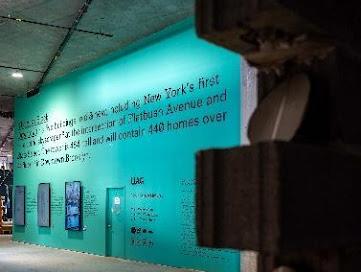

Beyond the Portico, UAG is diligent in ensuring safety is at the forefront of operations. We consistently conduct pre-test plans to ensure trade constructors on site are aware of proper protocols and hazardous tasks. These meetings often involve candid conversations around processes and logistics aimed at mitigating potential risks and adverse outcomes. Our communication is documented and always recorded for reference.
We regularly audit our projects with Safety Stratus, an enterprise environmental, health, and safety (EHS) software that can manage programs and data analytics. .
Beyond verbal communication, UAG prioritizes hands-on and virtual reality educational programming, workshops, training and discussions. Safety
continues to be revolutionized by innovation and as construction-related technology advances, it's imperative to honor the human aspect without replacing the workforce. We advocate for technology within our culture because these advancements supplement the workforce, ultimately streamlining workflows, reducing human error and providing safer working conditions.
Construction safety requirements are merely a foundation to build upon, and we strive to transform the standards of our industry while evolving as a firm. Through Portico, safety programs and technology implementation, as well as prioritizing the human aspect of construction, we’ve seen significant progress in establishing healthy jobsite cultures that relate to the people on site, instill value in team camaraderie and establish channels for continuous communication. Enforcing stringent safety standards and regulations is necessary, but leadership should prioritize proper buy-in to develop the habits that lead to consistently safer job sites. This mentality is the true power of human connection.
At its core, the definitive strength of our practice lies in our commitment to the health and long-term well-being of our people, places and processes, seamlessly integrating culture, safety and operations. At the forefront of changing the landscape of construction management safety, UAG will continue to raise safety standards that produce cutting-edge work and return our people home.
 BY DEEP CHAKRABORTY, CEO AND CO-FOUNDER AT ENACT SYSTEMS
BY DEEP CHAKRABORTY, CEO AND CO-FOUNDER AT ENACT SYSTEMS

It’s no secret that the planet is facing a climate crisis. U.N. Secretary-General Antonio Guterres claims that “We are on the highway to climate hell with our foot still on the accelerator.”
This is a bleak, but sobering reminder that we risk causing irreparable damage to our planet if decisive action isn’t taken soon. Whilst solar energy alone won’t fix the climate crisis, it has a powerful role to play in reducing carbon emissions and mitigating the harmful e ects of climate change on our people and planet. However, the future of clean energy will never come to fruition if the process of designing, deploying and managing solar panels, along with energy storage where needed, remains ine cient and inaccessible to all.
The Intergovernmental Panel on Climate Change (IPCC) has issued a stark warning that without an immediate and severe reduction in carbon emissions across all sectors, limiting global warming to 1.5 degrees Celsius will be impossible. To prevent this, all nations collectively need to reduce carbon emissions by 43% by 2030 and achieve net zero emissions by the start of 2050. Whilst every industry and individual has a responsibility to meet this goal, the real estate sector, in particular, has a key part to play.
The built environment is estimated to be responsible for 40% of all global greenhouse emissions, and if no action is taken, this figure is predicted to double by 2050, according to The Climate Group. Operational emissions such as heating, cooling and
lighting contribute to 27% of this overall number, according to “Why the Built Environment?” on the Architecture 2030 website. The majority of the opportunity to reduce real estate’s carbon footprint, therefore, lies in reducing the electricity used in a building.
There is no straightforward solution to solve the climate crisis. However, if we hope to mitigate the environmental damage done by the real estate industry, we must make the transition to clean energy in our buildings.
Solar: An Underutilized Solution
Solar power o ers a clean, emission-free and renewable energy source for buildings. During its lifetime, each solar panel prevents hundreds of kilograms of CO2 from being released into the atmosphere. There is also an added financial incentive here: U.S. households save on average $1,500 a year with solar panels, and businesses deploying solar on a larger scale have even greater potential savings. On top of that, the Federal government has a 30% income tax subsidy for consumers and businesses to procure solar, as well as energy storage where needed. Clean solar energy is therefore the perfect, viable and proven long-term solution for the real estate industry to cut costs, reduce carbon emissions and ultimately lessen its damaging impact on the environment.
So why does solar power contribute less than 3% of total energy production in the U.S., compared with fossil fuels which provide a significant 61% percent of total energy, according to the U.S. Energy Information Administration?
For too long, solar power has been regarded as inaccessible. Solar panels can be prohibitively expensive, and the process of deploying a system is complex. From selecting the right provider and financing solutions, to choosing from design and equipment options, it is often unclear which solution is optimal. This means many will avoid solar altogether or invest in a solution that underperforms.
If real estate wants to unlock the full potential of solar power and reduce its carbon footprint, the industry needs to take an altogether new approach to clean energy and solar power. To be truly accessible and practical for homeowners and businesses, the entire process of solar design, deployment and monitoring needs to be straightforward, a ordable and transparent.
Firstly, the solar design process should be more transparent and e cient for consumers. Each location is unique, and variables such as nearby tree shade and the age of a roof can impact the performance of solar panels and influence how best to install them. These factors can easily be overlooked and result in subpar solar design and, therefore, limited performance. By combining satellite imagery-powered software, data analytics and the insights of an expert advisor, customers can be sure that their solar system is optimized to their individual needs. This combination of technology and industry expertise removes the guesswork from the design process and means solar panel performance will be optimized.
The second major pitfall preventing real estate from fully embracing solar is the confusion caused when choosing the best equipment vendors and financing options. With hundreds of OEM brands for panels, inverters and other solar equipment and many financing schemes to choose from, the process can be incredibly time-consuming, and leave customers unsure they’ve made the right investment. What’s needed is a unified, open marketplace of trusted providers, which enables customers to evaluate and compare the best options.
There are also many misconceptions about solar power that prevent consumers from accessing clean energy solutions. For example, many assume that solar power only works in sunny weather, however, solar panels can generate energy even in rainy conditions. Some consumers are also concerned that solar panels will damage their roofs. In reality, the way panels are mounted means they act as a protective covering that can help preserve the roof of a building. Dispelling these myths will build more transparency and trust within the solar industry, therefore encouraging more building owners to make informed choices about solar power.
The third and perhaps most important opportunity for the solar industry to improve is by becoming more transparent. The Number One concern individuals have when considering solar panels or energy storage for their home or business is their return on investment. Solar panels require a considerable upfront commitment both in terms of time and money. Without a clear
understanding of your return on investment and the confidence your system is performing well, it’s di cult to make this commitment.
Full visibility on solar panel performance bolsters consumer confidence and maximizes their e cacy, and ultimately, the money and carbon saved. Monitoring technology that gathers data from solar systems to analyze their performance can provide insights for accurate and up-to-date information on the exact return on investment, giving users the assurance that their system is performing well. Data is also available that can generate insights into the health of the system and detect any faults ahead of time, thus avoiding field issues and costly outages.
These challenges in the design, deployment and monitoring of solar and storage projects are slowing the speed of adoption by real estate clients. Sales and decision-making cycles are too long, and that in turn hurts the viability of sales e orts. Although Fortune 100 companies started deploying solar over a decade ago, it is yet to be picked up by mainstream mid-tier companies. Less than 5,000 commercial solar projects are deployed in the U.S. per year today, with millions of buildings to go.
This is why I co-founded Enact Systems in 2014 and have since been making strides to accelerate the transition to clean energy by transforming how solar and energy storage projects are designed, deployed and managed. Our platform helps simplify and improve the experience of solar ownership for commercial and residential properties. Enact’s technology platform is now making solar and energy storage accessible to businesses and homeowners in more than 25 countries, and open to all major equipment providers and financiers, as well as thousands of installation professionals.
Our technology makes the entire solar and energy storage process simple and eliminates the common issues that prevent rapid market adoption. We are an independent platform – so neither the manufacturer, nor the constructor or financier of a project. Hence, our clients trust our independent data and insights to help them make the purchase and investment decisions across large portfolios of sites. For eight years, we’ve been raising the standards of the solar energy industry and making the necessary changes to facilitate both residential and commercial real estate’s transition to clean energy.
GIFT OF LIFE

6.8.23
THE LIGHTHOUSE

Celebrating Wendy Siegel’s 10-year Transplant Anniversary
HONORING
JULIE AND ANDREW RUBINSTEIN
PARTNERS FOR LIFE AWARD
WENDY SIEGEL

LIFETIME ACHIEVEMENT AWARD
HONORARY CHAIRS
MINDY SCHNEIDER AND DR. MICHAEL LESSER
GALA CHAIR
STEPHEN B. SIEGEL
RSVP online at: gala.giftoflife.org
AT CHELSEA PIERS, NYC





and construction.
the structure and the soil.
Carol A. Sigmond Partner
property both real and personal.
This column presents a general discussion. This column does not provide legal advice. legal advice.



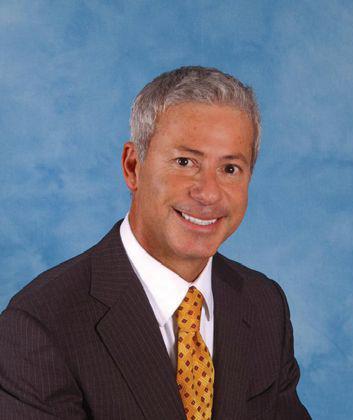

BY A CENTURY'S WORTH OF EXPERIENCE.
Our team & staff
Our tenants
Our partners

All New Yorkers
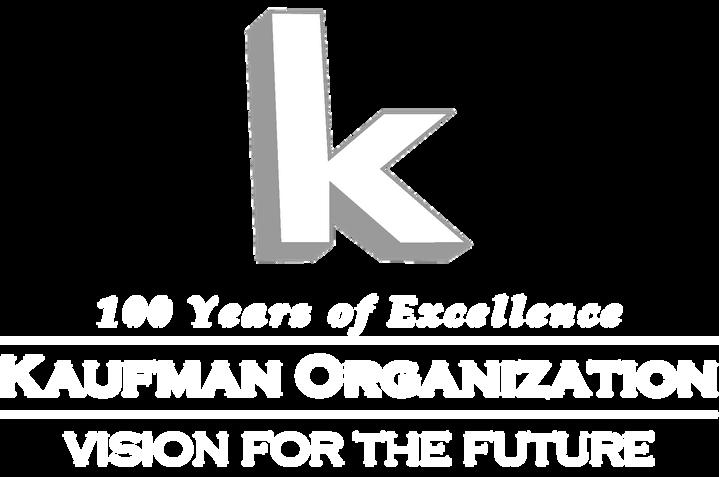
Controls noise pollution: Grassy areas ab
Kris Kiser President and CEOMitigates heat islands: daytime temperatures in urban areas that
Harvests rainwater and limits runoff: The dense canopy and

Supports pollinators and biodiversity: Science
Controls soil erosion:
Improves air quality: Produces oxygen:
Balances the man-made environment: eral landscape. They also make our communi
Langsam Property Services Corp. is a Bronx-based real estate management company. These buildings are located in the Bronx, Manhattan, Queens, Brooklyn, and lower Westchester County.


Langsam is designated as an Accredited Management Organization (AMO), a standard of excellence in management conferred by the Institute of Real Estate Management (IREM).
1601 Bronxdale Avenue
Bronx, New York 10462


Tel: 718. 518. 8000
Fax: 718.518. 8585

to resell the items online.
The measure establishes a coordinated
MAY 31 ST, 2023 | 5:30 PM - 8:30 PM
Please join us for the presentation of the Conrad B. Duberstein Memorial Award, and the Leadership in Credit Education Awards. We look forward to seeing you for cocktails, networking and a presentation you won’t want to miss! The presentations will begin promptly at 7:00 PM.




in the prior three years. The credit is limited to
 John Britto
John Britto
Itinerary
8:30 AM
Arrival and Registration
9:00 AM
Breakfast/Brunch
11:00 AM
Call to Carts

11:15 AM (SHARP)
Shotgun Start
5:00-6:00 PM

Hors D’oeuvres and Cocktails
6:00-7:00 PM
Dinner and Presentation of Golf Winners and Honorees
GOLF
$750 per person
$3,000 per foursome
DINNER & COCKTAILS ONLY
$250 per person
OCTOBER 2, 2023
Join us for the National Realty Club Foundation golf outing at the lovely Fresh Meadow Country Club in Lake Success, New York for a great day of golf, food, and networking. The National Realty Club was founded 76 years ago by Harry Helmsley. Currently leading the charge has been Jeffrey Mann with the help of Robert Romanoff, Jonathan Stern, Bob Knakal, Ed Wilkin, Jamiee Nardiello, Gregg Schenker, Orin Wilf, Dean Palin, Jay Neveloff, Pam Swidler, Lou Switzer and others. We are unifying individuals who can gain from one another as well as having a charitable arm to raise money to support NYC in areas that need help.

For more information, please contact penny@nationalrealtyclub.org
 Michael Kerr Chairman M&R Management Co., Inc
Zachary Kerr President M&R Management Co., Inc
Michael Kerr Chairman M&R Management Co., Inc
Zachary Kerr President M&R Management Co., Inc

and proprietary lease must be on hand
City can be less complicated since there is an
4.
5.
Certain circumstances could make the process
Pandemic-based Protocols and Evolution
dominium residences in the city continued to
ments remain essential.
Diana Diaz, Esq.


results and assessments. For property types
Steven Tishco, Esq. Partner
Greg Papeika, Esq.
Partner
Greg Papeika, Esq.

Understanding tax planning can be a taxing experience. It requires a dynamic knowledge of everchanging codes and regulations, plus a deep understanding of your individual needs and goals.
That’s where Janover comes in. We get to know both you AND your business. We then leverage our knowledge of the system to tailor a detailed tax plan that is unique to your speci c needs.

At Janover, our greatest value is the ability to help you look at the whole picture - numbers, family, business. You’ve worked hard to have it all... wouldn’t you like to keep it?


abatements and additional tax exemptions complicate the property tax structure. These tax breaks are used by policymakers to incen
asset classes
property assessments.



Mount Sinai New York–Concierge Care is a membershipbased medical practice that has brought the worldrenowned care of the Mount Sinai Health System in New York City, here to you in The Palm Beaches.

Our new concierge program o ers an outstanding patient experience and access around the clock. Our members receive comprehensive primary care, cardiac and dermatology assessments, and nutritional counseling, as well as amenities you would not find in a typical medical practice, such as home visits, urgent care, coordination of specialist care, travel medicine, and much more. Members will also have access to Mount Sinai’s Hudson Yards concierge practice in New York.
Most importantly, you gain access to the full resources of the Mount Sinai Health System, for all of your health care needs. This is the health care experience you have been looking for.
Learn more at mountsinaiconciergecare.org
To inquire about membership, please call 561-328-7112.
Mount Sinai New York-Concierge Care
625 N. Flagler Drive, Suite 200 West Palm Beach, FL 33401
Sherry Soliman, MD Anna Krishtul, MD Paul Skomra, MD Raiza Lopez, MDLandlords must put in place communication
Ben Hurley

that mission.
transparency in corporate practices and a
ability. These include:
•
ants can help to propel those results.
• Content about policies and procedures
Landlords that can demonstrate their commit
mercial real estate space. Landlords that can
LEONARD
MONDAY, JUNE 12, 2023 • 6:30 PM
RAINBOW ROOM
LAURENT MORALI CEO, Kushner Companies Tree of Life TM Award Honoree




MICHAEL MINTZ
CEO & Founder, MD Squared Property Group LLC Gregory A. Davis Award Recipient
lH ONOR ARY C HA IRS Davi d R . G reenbaum, Vornado Realty T rust Jeffrey E. Levine, Douglaston D evelopment
M ORE I NFO RMAT ION Sarah A zizi, Director, Manhattan sazizi@jnf.org ∙ 212.879.9305 x 505
Monday, August 14, 2023 ∙ 9:00 am Fresh Meadow Country Club
HONORING Michael Karger Vice President, Lincoln Land Services
TOURNAMENT CHAIR Mark F. Engel, Langsam Property Services Corp.
MORE INFORMATION Howard Ingram Assoc. Executive Director, Long Island hingram@jnf.org ∙ 516.678.6805 x110
jnf.org/LIgolfandtennis

























launched entrepreneurial careers in the industry.


 JEFF MONGE
JEFF MONGE
Lawrence Stuardi, CEO of MRA Group, a real estate development and client services firm based in the Philadelphia area, announced that Mike Wojewodka has been promoted to president of MRA Group and all related operating companies. Previously, he served as executive vice president.

“With over 20 years of commitment to our clients and our firm, Mike is well prepared to lead our organization into its next phase of expansion and development,” Stuardi said. “I am delighted to pass the mantle of the president to Mike, knowing that his unwavering integrity, exceptional real estate acumen and his solid commitment to the growth of both the firm and our associates are unwavering. His leadership has been critical to the success of our organization.”
Curbio, the home improvement company for fix now, pay-at-closing repairs and renovations, has promoted Rebecca Levine to the position of chief financial o cer (CFO). She had served as Curbio’s corporate controller since July 2018.

Levine brings more than 20 years of financial experience to her role at Curbio, having served as corporate controller at an array of notable companies including Tracx, WeddingWire and Vanda Pharmaceuticals Inc. She has also served as a senior associate at Lockheed Martin and KPMG, one of the 'Big Four' accounting organizations. In her role as CFO, Levine will oversee Curbio's financial, legal, human resources and talent acquisition operations.
“I am thrilled to o cially welcome Rebecca to Curbio’s executive team. Rebecca has been a key leader in Curbio’s finance department for many years and has already made a significant impact on our success as a company,” said Rick Rudman, CEO of Curbio. “When we began our search for a new CFO, she was the obvious choice. I am confident that she is exactly who we need in this role to enable our continued growth as the leading pre-listing home improvement solution for real estate agents.”
Additionally, Phillip Butler has been promoted to executive vice president of MRA Group and all related operating companies. Previously he served as senior vice president. “Phil provides seasoned insight and an invaluable ability to connect the dots. He is a people person with financial acumen,” explained Stuardi. “His strategic and operational expertise enhances our executive team's ability to further evolve the company, allowing MRA Group to embrace new opportunities and expand our capabilities.”
JLL has named Andy Poppink CEO of Markets Advisory, succeeding Greg O'Brien, who has been appointed to a key critical new role as executive chairman of Americas Markets Advisory. These changes are e ective July 1, 2023.

Poppink, currently CEO, of EMEA Markets Advisory, will become a member of the Global Executive Board (GEB), which is chaired by CEO Christian Ulbrich, and will be responsible for further developing JLL's global Markets Advisory strategy in partnership with regional, country and local market and business line leaders.
O'Brien, who has been a member of the GEB for the last 10 years, first as CEO of Americas and most recently in the global CEO, Markets Advisory role, will now be on the Americas, continuing to support JLL’s business strategies, growth and client relationships. He will step away from serving on the GEB but will continue to serve on various Americas leadership committees, working closely with John Gates, CEO of Americas Markets Advisory.
"On behalf of the GEB and myself, I would like to acknowledge Greg's partnership throughout the last decade, including leading our Markets Advisory business through our recent global realignment," said Ulbrich.
Previously, Poppink was president of the Western region in the U.S. and was formerly a tenant representation broker in the Silicon Valley region of California. He moved to Europe when he was named to the CEO of EMEA role. Following an international basketball career, he started in real estate with The Staubach Company, which became part of JLL in 2008.
FirstService Residential has promoted Mary Signorella to vice president in the Manhattan Condo/Co-op Division. In her new role, Signorella will have executive oversight of a portfolio of high-end condominium and cooperative properties. She will also oversee a team of dedicated property managers and assistant property managers in some of Manhattan’s most prestigious residential buildings.

Signorella joined FirstService Residential in 2005 and was quickly promoted to positions of increased oversight and authority. In 2016, she was bestowed a FirstService Residential Star Award in recognition of her accomplishments as a team leader, mentor and embodiment of the company’s core values.
Her portfolio of buildings includes 100 11th Ave., a luxury condo property designed by PritzkerPrize Laureate Jean Nouvel; the iconic Strand condominium tower at 500 West 43rd St.; and 2 Horatio St., a high-end co-op building located in Manhattan’s Greenwich Village Historic District, among other multifamily properties on the island.

 By Myles Mellor
By Myles Mellor
Monday, June 12, 2023



Old Oaks Country Club | Purchase, New York

Funds raised will help support groundbreaking medical research and treatment for patients with lung, heart, immune and related conditions, including asthma.
We Are Pleased to Welcome TOURNAMENT CHAIR
Roger A. Silverstein* Silverstein Properties, Inc.

CHAIRS EMERITI
Robert E. Helpern* Tannenbaum Helpern Syracuse &
Samuel B. Lewis* SBL Property Consultants, LLC
*National Jewish Health Trustee | **Co-Chair, National Jewish Health Council of National Trustees



Anas Al Kassas is the founder and CEO of Inovues, an award-winning climate-tech startup that makes existing buildings more efficient and sustainable by retrofitting their façades and windows with the latest energy-saving and smart glass technologies without replacement or disruption. Al Kassas has over a decade of international experience as an architect and facade system engineer. Prior to founding Inovues, he worked with renowned architectural firms and multinational façade fabricators and specialty glazing contractors.
Throughout his career, he worked on high-profile real estate developments around the world, including 200 Amsterdam Ave., a 50-story building in New York City; Entisar Tower, the second tallest tower in Dubai and Raffles City Chongqing, a 12-million-squarefoot skyscraper city in China. Al Kassas holds a Master of Architecture degree from Boston Architectural College and a Bachelor of Architecture degree from Damascus University.
How long have you been in the industry?
I come from an architectural background, specializing in façades. I founded Inovues in 2017 to address the lack of viable window retrofit solutions that did not require costly, disruptive and time-consuming replacement.
What brought you into the industry?
U.S. commercial buildings lose $57 billion annually to preventable energy loss. Buildings are also the largest carbon emitter, responsible for 40% of global CO2 emissions. The U.S. Department of Energy estimates that we can realize up to 30% energy savings by upgrading them, for example, with higher performance double- or triple-pane insulated glass. Be er insulated structures are also much more comfortable to work and live in. But over 70% of buildings have inefficient glass. The traditional remove-replace window retrofit method is too disruptive, wasteful and costs around $200 per square foot, resulting in unrealistic payback periods, often north of 100 years. One day, I looked at my drafty, single-pane apartment window and decided that we had to do be er.
Are we neglecting the role of windows in sustainability?
To a great degree, yes, we are. Experts who understand energy efficiency and buildings urge owners to investigate the façade first, but most are conditioned to focus on the mechanical systems instead. My colleagues and I are advocating for a more holistic approach to energy conservation.
Why aren't we taking what seems to be a
simple step?
We’ve discovered through hundreds of conversations with building executives that a lack of information on new technologies and strong preconceptions about affordability are two key challenges. We hope to build awareness of the inexpensive, non-replacement retrofit solutions available, and drive adoption.
What new technologies in windows and window treatments are you working on?
We constantly innovate our solutions to respond to customer input. Our systems are also glass-agnostic, which provides constant opportunities to integrate new glass technologies, such as dynamic tinting, privacy and smart glass.
Our latest collaboration is on building integrated clear photovoltaic glass for existing buildings, to electrify vertical facades and lower peak load demand.
What keeps you up at night?
The urgent need to accelerate the adoption of sustainable solutions to ensure a livable planet is a constant concern and top priority for me. As a climate tech startup, we constantly strive to find innovative and cost-effective ways to support the race to decarbonization and net zero emissions.
Anas Al KassasSECTOR EXPERTISE. TAILORED SOLUTIONS.
The financial backing of a global bank, and the streamlined structure and agility of a boutique bank that will keep your business moving forward.
BHI offers full commercial banking services that combine the personal attention of a prestigious boutique bank with the expertise and financial strength of Bank Hapoalim – the leading financial institution in Israel.
With a footprint in the largest U.S. metropolitan areas, we are committed to creating innovative funding solutions for your short– and long-term needs and providing convenient banking and liquidity products for your everyday business needs.

81
50% they helped a client buy or sell a property
$3.4 billion
The amount of utility costs good energy management can save multifamily housing
10,000
The approximate number of stores and retail facilities that have earned LEED green build-
Green Building Council)
4% 75


